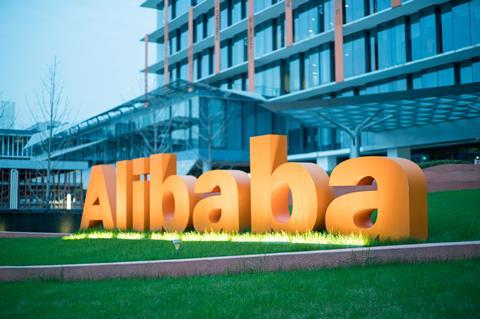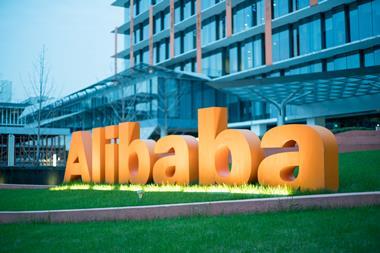PROMOTIONAL RESEARCH
Global ecommerce sales are expected to rise to £5.21trn in 2025. But to capitalise on this opportunity retailers must adapt to meet shoppers’ changing demands. Here we explore how Alibaba, Boots and Tesco are making online pay.
Globally, 20% of all sales were made online in 2024, according to McKinsey. In the UK this figure was even higher; ecommerce made up 27.2% of total retail sales in the last year—up slightly from 26.7% in 2023, according to the Office for National Statistics.
If we use the UK’s online retail market as a looking glass on the global market, ecommerce looks to be on the up.
So, how can retailers ensure they’re understanding and meeting online consumers’ changing demands, and therefore capitalising on this growing ecommerce opportunity, while still prioritising the bottom line?
Retail Week’s insights report The World’s Best Ecommerce Retailers turns the spotlight on the strategies of 10 global ecommerce trailblazers, highlighting the innovations and investments making a difference, and helping you understand what it really takes to win online.
Access your copy of the report and read on to explore a snippet of the strategies of three of the retailers showcased.
Alibaba

Business-to-business platform Alibaba reported a leap in year-on-year orders placed by UK small and medium enterprises during its annual expo in March 2025.
But what’s been driving these conversions?
The brand cites cost efficiencies, supplier reliability and access to innovative products as the key drivers, and the UK order surge was also boosted by growth across specific product categories in Europe.
Orders of footwear and accessories rose 105%, apparel and accessories 48% and casual sports shoes 173% compared to the same expo the previous year.
Alibaba also continues to invest in tools and tech designed to make the purchase decision easier.
An example of this is its AI-powered B2B product sourcing engine, dubbed Accio, which launched in November 2024 and is designed to empower users to make quicker and more informed purchase decisions by simplifying inquiries, payments and after-sales support.
By mid-January 2025, the engine had reached 500,000 SME users, with the Accio inspiration feature seeing a significant rise, of almost 30%, in conversion rates for suppliers.
The multinational tech conglomerate was ranked the third most valuable company in China according to Kantar, with a value of $68.48bn (£54.29bn) in 2024. The company also boasted the seventh most downloaded retail app in the world in Sensor Tower’s State of Mobile 2025 report.
Boots

Boots UK sales were up 1.6% in the three months to February 28, 2025, versus the year previous—contributing to an overall 4.1% uplift in sales at parent company Walgreens Boots Alliance during the same period.
Boots’ website saw sales increase by a fifth, with online now representing 20% of overall Boots retail sales.
So, what’s helping the health and beauty behemoth win online?
An inherent deep understanding of its customer base, and subsequent investment in what matters most to them, is having a big impact.
Since 2024, Boots has strengthened its grip on the beauty market, launched rapid delivery and prioritised value, storming Black Friday with an “exceptional” performance that saw its biggest-ever day of sales.
Just last month (April 2025) it announced the roll out of new dedicated menopause zones in 150 UK stores this summer, which will make it easier for women to find products and offer opportunity to speak to specially trained staff including pharmacists in store.
Speaking at Live: Retail Week x The Grocer in February 2025, chief digital officer Paula Bobbett said the next step for Boots is to leverage its growing data pool to evolve its healthcare services.
The success of its Boots Advantage Card app, implementation of an AI chatbot and its multimillion-pound investment in its digital platform has left the retailer in an excellent position when it comes to data shared with consent for use. Bobbett discussed the brand tackling this “next frontier”, using the data to drive better healthcare outcomes.
Tesco

In April 2025, Tesco’s UK market share increased to its highest level since 2016, up 67 basis points to 28.3%. Latest sales figures saw online sales leap 10.2% for the 52 weeks to February 22, 2025.
The supermarket said there had been an “increase in the competitive intensity of the UK market” but that there are further opportunities to “protect and strengthen” its competitiveness.
According to the World Economic Forum, Tesco is the third-largest retailer in the world by gross revenues, and the ninth largest by revenues. So, what’s contributing to its ongoing success?
Tesco has long been a leader in customer experience (CX), thanks to its trailblazing loyalty scheme that operates in multiple countries including the UK, Ireland, the Czech Republic, Slovakia and Hungary.
The scheme gives the grocer access to valuable customer data, allowing the brand to better serve shoppers.
February this year saw a pilot to its ‘Clubcard Prices’, to offer customers bespoke discounts based on shopping behaviours. Customers chosen to participate received new offers every Wednesday within the grocer’s app, which were valid for seven days.
As part of its dedication to continually improve its product offering, in June last year Tesco launched the ‘one-stop-shop’ online marketplace, which displays third-party goods alongside the grocer’s own range, after data insights revealed customers were searching for products the supermarket didn’t sell.
The platform launched with around 9,000 products across DIY, garden, home, pet care and toys, but by August, more than 20,000 products were on its virtual shelves.
May this year saw the relaunch of its F&F clothing range online for the first time since 2018, with more than 2,000 products available to shop via its website and Clubcard app, in a move driven by “growing demand” from consumers to shop the brand online.

Want to find out which other retailers are celebrated in the report, and see if your business is among them? Access your copy of The World’s Best Ecommerce Retailers today to discover more.
You will also uncover:
- Where the top 10 retailers are investing money, time and resource to see the greatest returns online
- What’s shaping today’s ecommerce landscape and what you should be prioritising to drive growth
- Which digital innovations are all hype, and which really contribute to conversions
- How getting online payments right can drive loyalty and boost basket spend


























No comments yet